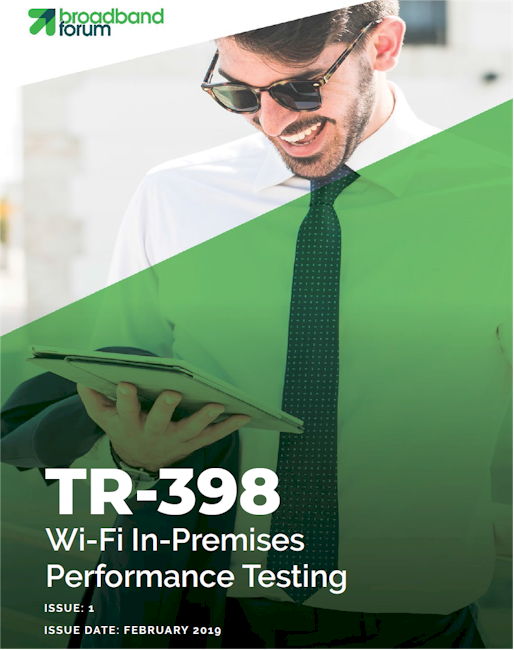
Continue reading on SmallNetBuilder.

The first Wi-Fi performance test standard will change the way we test Wi-Fi products.
Thanks, but I link to the spec two times in the What Is TR-398? section.
What are you referring to?Right now a $35 piece outperforms most of the $200 wifi 5 pieces
Thanks, but I link to the spec two times in the What Is TR-398? section.
Tim,
I wish you the best on this change of direction.
I followed SNB for years. It was the best source of information for those of us who wanted to get them most out of our home network but didn't have the time to become network engineers.
For the past couple of years I have not spent much time on the site because it did not seem particularly relevant to me. My network issues were never fixed by the latest or greatest technology or the fastest connection. My network issues stemmed from several clients all competing for air time and access to the upstream internet link.
The ability to gracefully handle voip calls and a netflix stream or two while someone downloads a file is more important than raw AP to client speed.
Looking forward to your upcoming articles and reviews.
And not a single word about radiation, that word is apparently taboo in the business
And not a single word about radiation, that word is apparently taboo in the business
That part is already evaluated by regulatory bodies such as the FCC. You can see all the complete test data in FCC filings. Here's an example:
https://fccid.io/MSQ-RTHU00/RF-Exposure-Info/RF-Exposure-4071845
Yes but whoes data is that owned by whom, ordered by whom, is this is an independent measurement?
Or is it done by the industry itself on their terms, done by them self?
Tim,
I wish you the best on this change of direction.
I followed SNB for years. It was the best source of information for those of us who wanted to get them most out of our home network but didn't have the time to become network engineers.
For the past couple of years I have not spent much time on the site because it did not seem particularly relevant to me. My network issues were never fixed by the latest or greatest technology or the fastest connection. My network issues stemmed from several clients all competing for air time and access to the upstream internet link.
The ability to gracefully handle voip calls and a netflix stream or two while someone downloads a file is more important than raw AP to client speed.
Looking forward to your upcoming articles and reviews.
Those are done by specialized labs, who must provide complete test data to the manufacturer when they file with the FCC. So yes, they are independent, and falsifying test results could lead them in serious legal troubles. They are more trustworthy than what any typical reviewer might provide because of their legal liability.
Also, TR-398 is about wifi performance. EM radiations are unrelated to performance.

Welcome To SNBForums
SNBForums is a community for anyone who wants to learn about or discuss the latest in wireless routers, network storage and the ins and outs of building and maintaining a small network.
If you'd like to post a question, simply register and have at it!
While you're at it, please check out SmallNetBuilder for product reviews and our famous Router Charts, Ranker and plenty more!
